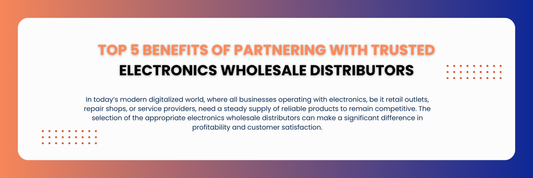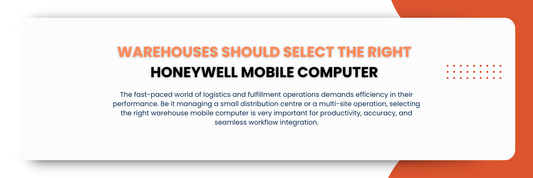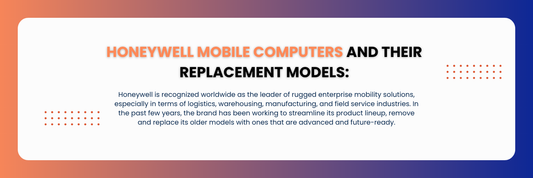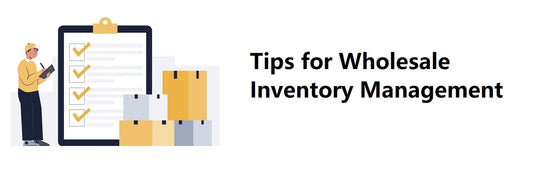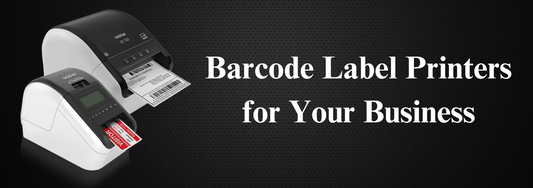Think about the time your staff spends walking to a central station just to pick up a label. With mobile printers, that wasted time vanishes. The return on investment (ROI) for mobile printers in a warehouse or distribution center can often be realized in just one year. For facilities already equipped with a wireless LAN, the value proposition is even more compelling, opening up new avenues for efficiency and error reduction with a relatively small incremental investment.
This article will explore how barcode and RFID labeling, supercharged by mobile and wireless printers, can revolutionize your daily operations. We'll cover:
- How mobile/wireless printing improves key warehouse processes.
- Strategies to eliminate common labeling errors by printing on-site.
- Real-world examples of mobile printing transforming operations.
- A simple formula to calculate your potential ROI.
- Integration with wireless LANs and batch operating systems.
The Tangible Business Impact of Going Mobile
Every step an employee takes to retrieve a label is a hidden cost. A time-motion study by Zebra Technologies revealed a powerful insight: a warehouse worker took nine steps to walk from a pallet of goods to a fixed printing station. By using a wearable mobile printer, the need to walk to that central station was eliminated, reducing the time to label the pallet by 42% (from 49.74 seconds to just 28.11 seconds).
When you scale this time-saving across the sheer volume of materials handled in a typical distribution center, the efficiency gains and rapid ROI become crystal clear.
Cost-Benefit Analysis: See the Savings for Yourself
Here’s an example calculation comparing fixed printers with mobile printers.
| Metric |
Fixed Printer |
Mobile Printer |
Annual Savings |
| Shifts per week |
10 |
10 |
- |
| Hours per shift |
8 |
8 |
- |
| Work weeks per year |
48 |
48 |
- |
| Annual working hours |
3840 |
3840 |
- |
| Avg. items labeled per hour |
15 |
15 |
- |
| Avg. time fetching labels (minutes) |
2.0 |
0.5 |
- |
| Annual time spent fetching labels (hours) |
1920 |
480 |
1440 |
| Avg. labor cost per hour ($) |
12 |
12 |
- |
| Annual label-fetching labor cost ($) |
23,040 |
5,760 |
17,280 |
Result: A company can save $17,280 per year simply by reducing the time employees spend walking back and forth to collect labels.
Beyond Speed: The Critical Role of Accuracy
Eliminating the walk to a printer does more than save time; it prevents distractions and boosts accuracy. Every time a worker has to stop a task, their focus is broken. Walking through a busy warehouse invites interruptions and conversations, increasing the chances of grabbing the wrong label from the print station or, worse, applying the wrong label to the wrong shipment.
While barcode scanning already delivers over 99.9% data accuracy—a massive improvement over manual entry—mobile printing closes the final gap. Inventory accuracy is paramount. Poor accuracy is often compensated for with "safety stock," which ties up capital and hurts your Return on Assets (ROA). Mobile technology allows for real-time cycle counts in the aisles, ensuring your inventory data is always precise.
The hidden costs of inaccuracy are staggering. Industry research shows that a typical warehouse has a 2.5% error rate, and the cost of a single shipping error ranges from $60 to $250. This includes expenses for return shipping, reprocessing, and customer service time.
-
Daily Shipments: 100
-
Error Rate: 2.5%
-
Average Cost per Error: $100
-
Daily Cost of Errors: $250
-
Annual Cost of Errors (5-day week, 52 weeks): $65,000
By reducing the error rate from 2.5% to just 1.5%, you could save $26,000 annually. For a company with a 5% profit margin, you would need to generate $1.3 million in new revenue just to cover the cost of those errors.
Common Applications: Where Mobile Printing Shines
Mobile printers deliver significant time savings and accuracy gains across the entire warehouse workflow, from receiving to shipping.
(Visual Suggestion: A dynamic infographic or a series of icons representing each warehouse stage: Receiving, QA, Cross-Docking, Put-Away, Picking, Packing, Shipping.)
1. Supercharging the Receiving Dock
Instead of pre-printing massive batches of labels in a central office, workers can use mobile printers (often mounted on forklifts) to label goods the moment they are unloaded. This ensures every item is scanned and tracked from the start, maximizing the benefit of your automated systems. For outdoor receiving yards, rugged mobile printers are perfect for labeling large items and containers on the spot.
2. Supporting Quality Assurance (QA)
In the QA station, inspectors can use mobile printers to create clear, legible labels for samples. These labels can act as work orders, detailing required tests. Once testing is complete, QA personnel can instantly print "Pass," "Rework," or "Fail" labels, virtually eliminating the risk of misidentifying products and preventing quality issues downstream.
3. Streamlining Cross-Docking
Cross-docking is all about speed. Mobile technology is the perfect fit. Equipped with a mobile data terminal and printer, a worker can scan an incoming shipment, send the data to the host system, and immediately generate the correct outbound shipping label. This on-the-spot labeling provides the accuracy needed for rapid transit without adding delays.
4. Simplifying Put-Away
As the Zebra study showed, labeling goods in the aisle before put-away is 62% faster than walking to a fixed printer. Workers can request a label from their handheld terminal, and the data is sent wirelessly to the ERP system, which updates inventory and sends back the information to print a perfect barcode label. This process can save each user up to 30 minutes per day.
5. Optimizing the Picking Process
Picking is the reverse of put-away, and the time-saving potential is just as significant. A wireless LAN combined with on-demand printing allows operators to pick multiple orders in a small area, reducing travel time. One distribution center cut its picking time in half and achieved near-100% accuracy by equipping forklifts with mobile printers. Drivers receive pick lists on a screen, scan the product to verify, and the system automatically prints the correct shipping label, ensuring a perfect match every time.
6. Accelerating Packing and Finished Goods
For any operation involving light assembly or packing, mobile printing is invaluable. As soon as a product is assembled or packaged, a worker can generate a label, which might include a serial number or a 2D barcode with specific configuration details. This is crucial for accuracy, as many unique items can look very similar. Labeling on the spot prevents mix-ups.
Understanding the Technology
Zebra mobile printers are designed for seamless integration with industrial workflows. They can connect wirelessly to your host system to receive print jobs, label formats, and variable data.
-
Connectivity: Bluetooth® is the leading cable-replacement technology, offering reliable, short-range wireless communication that isn't affected by line-of-sight issues. For broader coverage, Wi-Fi (802.11) integration allows printers to be managed as networked devices.
-
Printer Design: While size and weight are important, factors like display placement, ease of media loading, and ergonomics (especially for gloved hands) have a greater impact on efficiency.
-
Media and Battery Life: Choosing the right label material for your environment (considering moisture and temperature) is key. Likewise, ensuring the printer's battery can last an entire shift is critical for uninterrupted operations. Modern Li-Ion batteries offer the best power-to-weight ratio, ensuring your team stays productive.
Ready to Make the Move?
By empowering your workforce to print labels at the point of application, you don't just save seconds—you build a more accurate, efficient, and profitable operation. The evidence is clear: mobile printing isn't a luxury; it's a competitive necessity.







